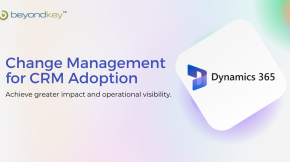How OCR Automates the Insurance Sector
Industries waste their precious time in manual data entry, manually finding errors, reviewing documents, and interpreting data using non-automatic methods. Thus many industries lower their profits and fail to improve their productivity due to the use of labor-intensive processes. They require a basic and straightforward technology that helps them transform their documents into accessible and customizable data.
What is Optical Character Recognition (OCR)?
Optical Character Recognition (OCR) is the electronic conversion of scanned images into computer-readable or machine-encoded images. OCR helps digitize printed texts to enable data extraction, processing insurance claims, and building better solutions. In simple words, OCR allows users to retrieve information and further alter the original piece. It is a reliable method that enables various industries to extract maximum value from the data. Many industries are increasingly using OCR to achieve seamless control over their tasks. OCR is beneficial in prominent industries, including accounting, finance, banking, healthcare, insurance, and logistics.
Why do insurance companies need OCR?
Insurance companies deal with tons of data and a myriad of documents every day. They need to constantly deal with new policies, endorsements, proposal forms, and certificates of insurance. Thus to process these documents efficiently, insurance companies require OCR to avoid unimaginable work delays and manual errors. OCR in Insurance manages costs, increases profits and increases customer retention. It provides deep data insights to obtain better solutions and reduce losses faced by insurers. Also, OCR boosts workflow efficiency and ensures data validation for high-quality and accurate output. Lastly, OCR stops duplicates or multiple processes, which were a primary reason behind high insurance operations costs.
How does OCR work?
OCR analyzes a physical document’s data and converts the information into a script used for processing data. Following are the three essential steps of the program-
Pre-processing the information
OCR first converts the document’s physical structure into graphics. This step helps eliminate undesired information and further categorize the pictures into black-and-white regions.
AI character recognition
AI helps in identifying patterns and character attributes. Thus, new characters are determined based on specific character properties in this step.
Post-processing
In this step, AI verifies that no interpretations are beyond the vocabulary.
Benefits of OCR in Insurance
Safety of important documents
OCR enables the security of documents and allows insurers to deal with fraudulent claims. Insurers can easily keep complete track of their policies and minimize the losses incurred due to fraud. Thus with the help of OCR and other automated analytic tools, manual work reduces, and insurers can enjoy shorter resolutions for their diverse issues. OCR is also useful for claims that involve multiple parties or complex legal issues.
Better user experience
Due to the quick interface program of OCR software, users can process their documents without much hassle. OCR is a great medium to boost customer service and uplift brand image in the market. OCR also helps structure data in a suitable format that users can analyze quickly. OCR reduces the need for manual indexing and allows insurance companies to address customer issues by creating a portal enabling customers to upload their documents quickly.
OCR reduces costs, saves time, and eliminates manual procedures
The switch from manual methods to digital methods helps in the reduction of resources needed to onboard data. As OCR helps in reducing costs, this method helps attract more clients. Insurance companies can increase their efficiency due to OCR and thus perform better than their competitors. OCR can handle front-end data capture efficiently and helps reduce errors and omissions. With the help of OCR, insurance companies can make accurate predictions about marketplace trends, risks, and customer behavior.
Extracting data from complex and unstructured documents
OCR, along with deep learning models, helps extract data from structureless documents. Deep learning helps obtain relevant information and allows OCR programs to recognize common patterns, shapes, etc. Additionally, OCR technology helps easily integrate other systems and tools within the insurance industry. The seamless data transfer helps insurance companies provide better customer service.
The role of AI in the insurance industry
Insurance companies invest heavily in AI as it automates manual processes and improves service quality by assisting agents in making indisputable decisions. AI helps in lowering labor costs in the processing of insurance claims. AI allows the combining of different data-sharing channels and interactions, which benefits insurers. AI helps reduce the gap between customer needs and the level of service experience provided. Lastly, AI helps in saving the resources of insurers invested in outsourcing manual data entry. Thus artificial intelligence claims processing by automating the processing of straightforward claims at a fraction of the cost.
How can Beyond Key help with OCR?
Beyond Key is known for designing dynamic solutions to solve problems for various businesses. Beyond Key allows insurance companies to digitize documents, extract data fields and extract relevant information from unstructured data. It thus enables insurance companies to work with loads of data and process documents based on required parameters.












